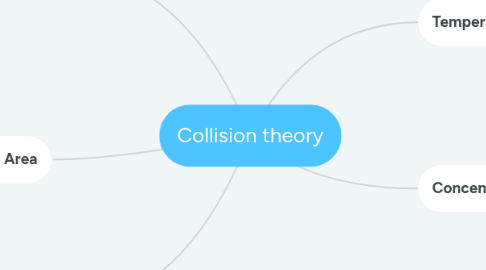Collision theory
par ianen chen


1. Pressure
1.1. Only applicable to gases
1.2. Increase in pressure increases rate of reaction. Decrease in pressure decreases rate of reaction
1.3. Increase in pressure increases concentration of the gases
1.3.1. With a smaller volume occupied by the gaseous mixture, the molecules are now closer to each other and the collision frequency increases, thus increasing rate of reaction
2. Surface Area
2.1. Increase in surface area increases rate of reaction. Decrease in surface area decreases rate of reaction
2.2. Only applicable for solids
2.3. As available area of contact between reactants increases, the frequency of collisions and hence the frequency of effective collisions also increases. This leads to increase in rate of reaction
3. Presence of catalyst
3.1. Catalysts increase the speed of chemical reactions and remain chemically unchanged
3.2. They provide an alternative pathway with lower activation energy for the reaction to proceed
3.2.1. Since activation energy is lowered, a greater proportion of collisions between reacting particles will possess energy > activation energy. This results in products being formed much faster, hence a faster rate of reaction
4. Temperature
4.1. The higher the temperature, the faster the movement of reactant particles due to high kinetic energy
4.1.1. Increase in frequency of collisions leads to increase in frequency of effective collisions. This results in faster rate of reaction
4.2. High temperatures lead to faster rate of reaction. Lower temperatures lead to slower rate of reaction
5. Concentration
5.1. Increase in concentration increases number of reactant particles in a fixed volume
5.1.1. Hence, more frequent collisions leads to more frequent effective collisions. This results in higher rate of reaction
